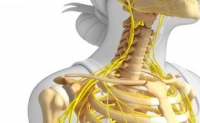Micronutrients Are Needed For A Healthy Skeletal System
The skeletal system is made up of bones and joints and provides support, mobility, and protection to various organs in the body. We are born with more than 300 bones. Many of them, such as the skull bones, fuse together and as an adult we have 206 bones. The largest bone in the human body is the femur (thigh bone) and the smallest bones in the human body are the three bones of the middle ear. Maximum bone growth occurs during childhood and puberty, and tapers off as the person approaches 16-18 years of age. While the bones do not grow in size after 18-20 years, they do not remain just as stagnant, hard and inert structures. Continuous metabolic processes called bone remodeling, during which bone is resorbed and formed again occur throughout our life. A major role in this process is played by specialized cells in the skeletal system called osteoblasts which are bone lining cells, and osteoclasts which are bone dissolving cells. Our entire skeleton is renewed every few years and it is estimated that at any time about 20% of an adult bone is undergoing remodeling.
The framework of bones is made of collagen, a protein on which minerals are deposited hardening the entire structure. The overall health of our bones and joints depends on the optimum production and structure of collagen. Bones provide more than structural support and protection to body’s organs. They are an important reservoir for minerals, such as calcium and phosphorus. These minerals are essential for maintaining heartbeat, muscle contractions and other functions. With their insufficient intake these minerals are taken away from the bone in order to keep their optimum level in the blood. The bone also shields marrow where various blood cells are produced. Certain lipids are also stored in bone marrow acting as energy storage.
Just like other cells in our body, the cells building the bones need multiple micronutrients, not only calcium and vitamin D. Vitamin D is essential for optimum absorption of calcium, the most important mineral in bones. Additionally, vitamin C and the amino acids lysine and proline are critical in building strong and healthy collagen which in turn forms the strong internal skeleton of bone. The alignment of collagen fibers determines how calcium and other minerals are deposited and assures metabolic stability and strength of the bones. However, there are other nutrients that build maximum bone mass and includes the B-group of vitamins, vitamin K, and minerals such as copper, phosphorus, magnesium, boron, and zinc.
A healthy diet, exercise, and a synergistic combination of micronutrients are essential to maintain healthy bones. A chronic deficiency of these micronutrients can lead to weakening and mineral depletion in the bones. When the rate of bone dissolution is higher than bone formation, a net bone loss occurs leading to conditions such as osteoporosis (thinning bones) or osteomalacia (failure of bone mineralization) which can lead to deformities. Due to the modern sedentary lifestyle of humans, bone diseases such as osteoporosis are not limited to the ageing process. Women who are as young as 25 may also experience initial stages of osteoporosis. Other factors, including an estrogen, testosterone, or parathyroid hormone imbalance, can affect bone metabolism.
Most of the micronutrient supplements recommended for bone health contain mainly calcium with or without vitamin D. However, if collagen is not formed properly, then calcium and other minerals cannot be optimally incorporated in the bone and thus optimum strength and stability of bone tissue cannot be assured. Therefore, it is important to pay attention to the ingredients and proportions in bone supporting supplements and to choose supplements that synergistically support the strength and function of the skeletal system.
